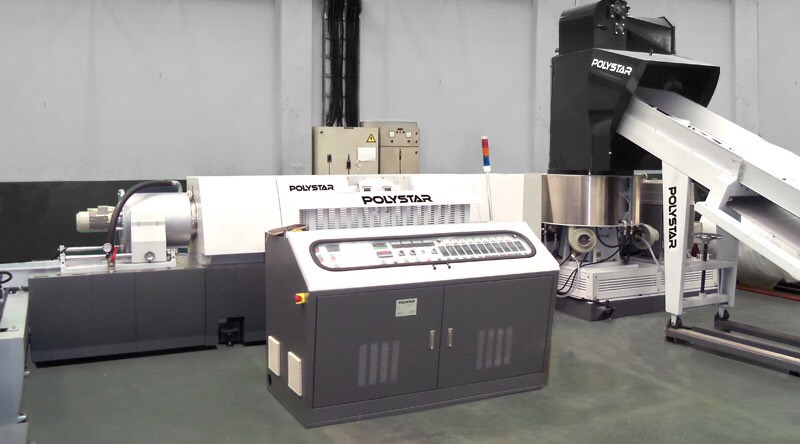POLYSTAR manufactures recycling machines with various types of crushing and shredding technology integration, with focus on simplicity and ease of use. The company offers a number of materials produced from its recycling machines, and in recent years has provided solutions to manufacturers in over 103 countries. The key is in providing customized machineries for every single customer – observe the needs and tackle the problems. Jack Lin, sales manager, explains further in this interview.
In which food packaging production process do the machines fit?
Polystar’s recycling machines are facilitated both in the recycling procedure and during upstream production. Most of the customers use it to recover its in-house film waste generated from blown film extrusion lines, turning wrong sized or flawed products in to reusable pallets. The companies would either sell the recycled pallets or reuse it in their production in food and beverage. This trend has been very popular in Europe, as the recycled pallets from POLYSTAR are ensured of high quality, thus they are highly desirable in the market. POLYSTAR is promoting this concept in Southeast Asia as the population surges, so as the packaging consumption. For food and beverage packaging manufacturers, recycling plastics packaging is not only for the merit of reusing resources to increase the economic value of plastics, but also for reducing wastes and environmental burden.

POLYSTAR’s HNT-V one-step plastic recycling line
Please explain how the recycling machines work.
The recycling line is able to turn a variety of films products (of different thickness and printed percentage) into high quality pellets. POLYSTAR’s HNT-V is a one-step plastic recycling technology, combining cutting, extrusion and pelletizing. The production waste enters the plastic waste recycling machine from the conveyor belt (for film scraps and rigid plastic regrind) and also through nip roll feeder (for film-on-rolls) at the same time.
Furthermore, the material input is controlled automatically based on the load of the cutter compactor. Through natural heat and friction, the cutter compactor then cuts and densifies the material into a semi-molten condition (a brief gentle heating just below the agglomeration point) for the subsequent extrusion process.
What is the capacity for the recycling machine in reprocessing materials?
The POLYSTAR recycling line can reprocess a variety of films including printed and non-printed high density polyethylene (HDPE), low density (LDPE), polypropylene (PP) and BOPP.
Different film compositions, ranging from monolayer, multi-layer to laminated films with different degrees of printing percentage can be recycled into high quality pellets without significant changes in properties.
The cutter compactor subsequently feeds the compacted material directly and consistently into the extruder then into the degassing, filtering and pelletizing processes. Relying on the strong versatility of its machineries in processing materials, and the high-quality pallets being produced, there is a solid increase of food packaging manufacturers who choose to facilitate this machine to meet the flourishing packaging market in Southeast Asia.
Could you share some cases on the successful use of POLYSTAR equipment?
One of the leading Vietnamese flexible packaging film producers has recently installed a POLYSTAR recycling line to recover its in-house film waste generated from its three and five-layer blown film extrusion lines. Since the commissioning of the machine in Ho Chi Minh, the company has already recovered more than 1,000 tons of post-industrial film waste, turning rejected post-industrial film scraps back to high quality pellets for immediate reprocessing in the film extrusion lines.
The flexible packaging film maker produces a wide variety of products including food packaging, shrinkable film and various types of PE and PP film, both printed and non-printed. With the addition of the new POLYSTAR, it can now process all of its in-house waste to ensure the quality of the recycled pellets is consistently high.
How has the company been performing in Southeast Asia?
Besides the successful cases in Vietnam, POLYSTAR has significantly increased its markets share in the Asian market in recent years, working with renowned film producers in Indonesia, Thailand, Malaysia and Vietnam. It has established itself as a premier recycling solution provider thanks to proven success, positive customer feedback and references.
Air Jordan VIII 8 Shoes













